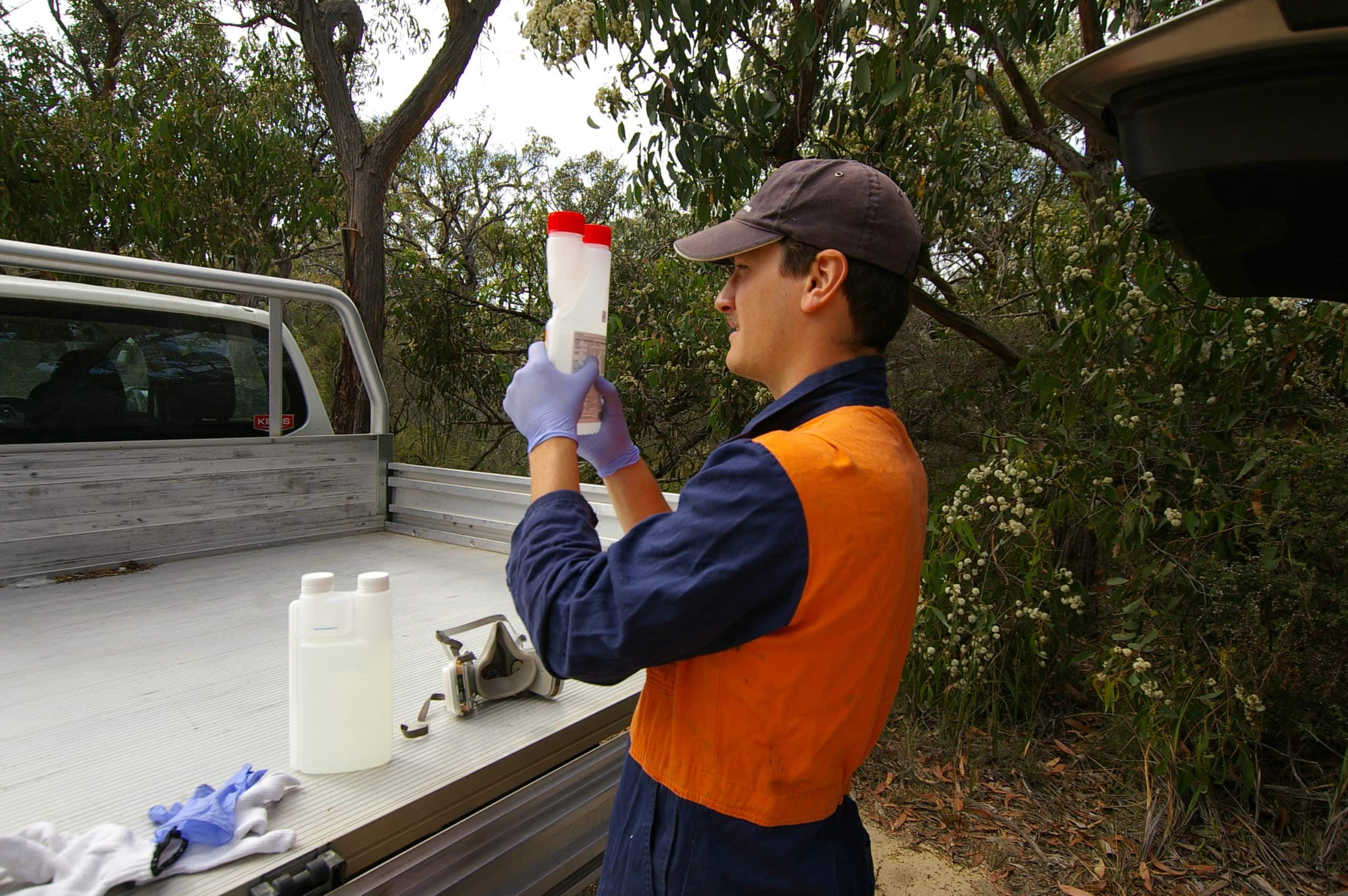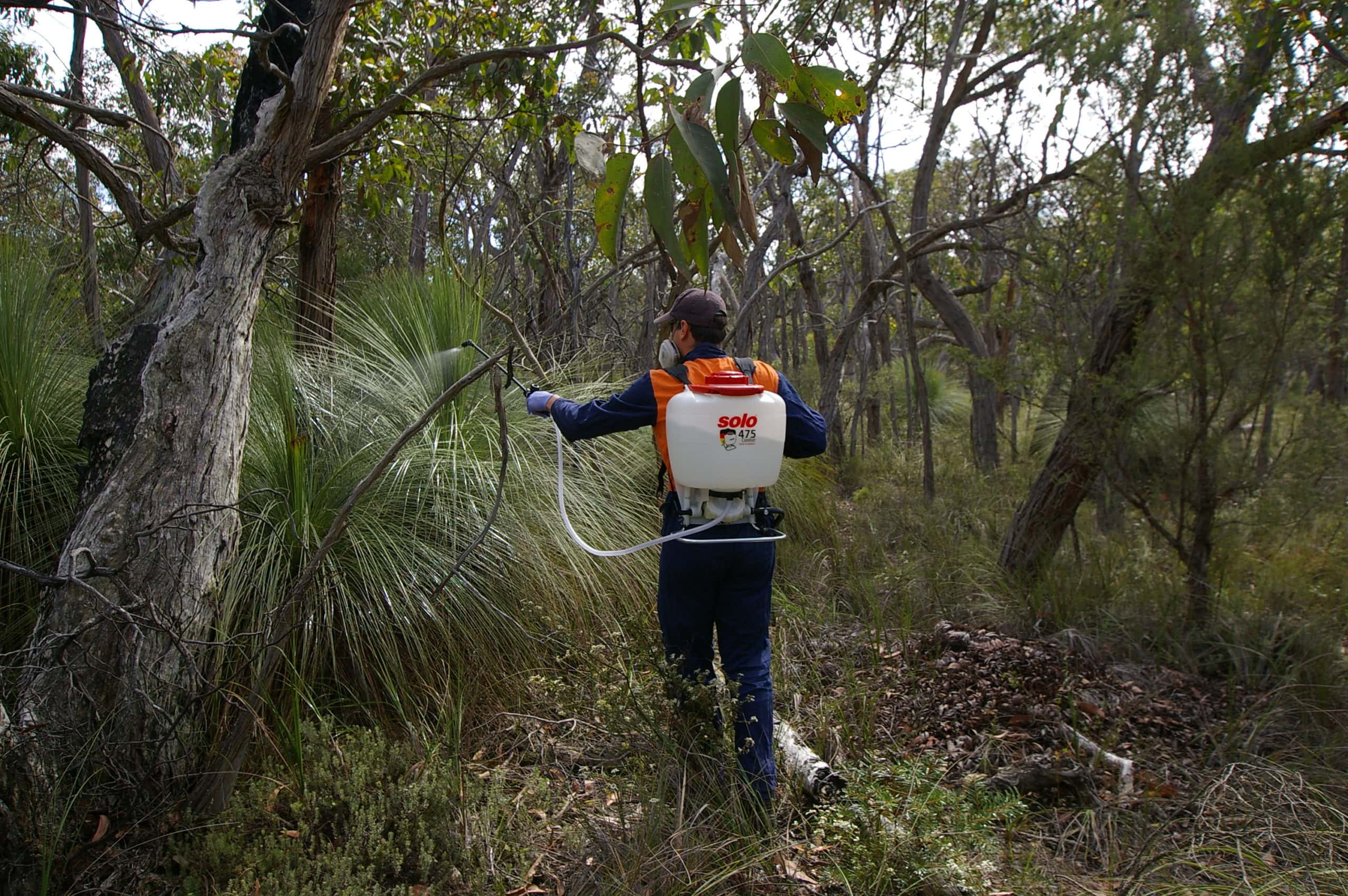A significant threat to the unique values of the Otways is the vegetation disease caused by the introduced plant pathogen Phytophthora cinnamomi.
It causes devastating dieback disease in our native vegetation, particularly grasstrees and other heathland plants. However, there is one weapon we have in our toolkit to combat Phytophthora dieback – it is a salt-like chemical called Phosphite, which has many similarities to phosphate fertiliser.


Phosphite works by signalling to plants to turn on their defence mechanisms. When the plants' defence mechanisms are turned on, plants usually killed by Phytophthora, like our iconic grasstrees, can defend themselves from attack.
This week The Phytophthora Management Team made a big step in our use of Phosphite as a weapon against Phytophthora dieback. A hand spraying trial aimed at protecting small patches of 150-year-old grasstrees at Eumeralla near Anglesea commenced.
Deakin University PhD student Campbell Learmonth is testing how effective Phosphite treatment is, in the Otways environment. Campbell is now spraying Phosphite in the eastern Otways and at Carlisle Heath near Gellibrand.
This project is supported by The Corangamite CMA through funding from the Australian Government’s Environment Restoration Fund.
This project is running until 2023.
64 Dennis Street, Colac VIC 3250
PO Box 159, Colac, VIC 3250
Hours: 8:30am – 5pm, Monday to Friday
T: 1800 002 262
E: info@ccma.vic.gov.au
BARWON WATER OFFICES
Hours: 8:30am – 5pm, Monday to Friday
All mail must be sent via our Colac office
PO Box 159, Colac, VIC 3250
T: 1800 002 262
E: info@ccma.vic.gov.au
 Close
Close